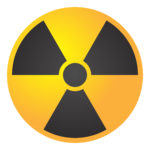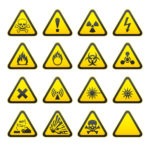The Dangers of Industrial Acids & Alkalines in Industrial Use Industrial acids and alkalines play a crucial role in various industries, from manufacturing and metal processing to chemical production and cleaning. However, these substances can pose serious health, safety, and environmental risks when not handled properly. Understanding their dangers and implementing strict safety measures is […]
Category: Control of Substances Hazardous to Health (COSHH)
COSHH is the law that requires employers to control substances that are hazardous to health. Most business sectors have to apply to COSHH from factories to offices as most businesses deal with hazardous substances from acids to printer toner cartridges.
The HSE state that this regulation covers substances that are hazardous to health. Substances can take many forms and include:
- chemicals
- products containing chemicals
- fumes
- dusts
- vapours
- mists
- nanotechnology
- gases and asphyxiating gases and
- biological agents (germs). If the packaging has any of the hazard symbols then it is classed as a hazardous substance.
- germs that cause diseases such as leptospirosis or legionnaires disease and germs used in laboratories.
The HSE also state that you can prevent or reduce workers exposure to hazardous substances by:
- finding out what the health hazards are;
- deciding how to prevent harm to health (risk assessment);
- providing control measures to reduce harm to health;
- making sure they are used ;
- keeping all control measures in good working order;
- providing information, instruction and training for employees and others;
- providing monitoring and health surveillance in appropriate cases;
- planning for emergencies.
If you would like anything included in his COSHH section or have any questions please email us and we will add them in.
Industrial Acids: Effects on the Body, First Aid, Health Impacts & Prevention in the Workplace
Industrial acids, such as sulfuric, hydrochloric, and nitric acid, are commonly used in various industries for their corrosive properties. However, exposure to these acids can pose serious risks to workers’ health. In this article, we’ll discuss the effects of industrial acids on the body, first aid requirements, immediate and long-term health effects, and prevention strategies. […]
Industrial Alkalines: Body Effects, First Aid, Health Impacts & Prevention in the Workplace
Industrial alkalines, such as sodium hydroxide, potassium hydroxide, and ammonia, are widely used in various industries due to their versatile properties. However, exposure to these alkaline substances can pose significant risks to workers’ health. In this article, we’ll discuss the effects of industrial alkalines on the body, first aid requirements, immediate and long-term health effects, […]
Legionnaires’ Disease in the Workplace: Health Effects and Prevention Strategies
Legionnaires’ disease is a severe form of pneumonia caused by the Legionella bacteria. The bacteria can be found in contaminated water systems, such as cooling towers, air conditioning units, or hot water systems. In this article, we’ll discuss the effects of Legionnaires’ disease on the body, immediate and long-term health effects, and prevention strategies. Effects […]

CHIP Regulations
CHIP is the abbreviated name for the Chemicals (Hazard Information and Packaging for Supply) Regulations. The CHIP regulations are being replaced by the European CLP Regulations and will be revoked from 1 June 2015. The CHIP regulations implement two European Directives: The Dangerous Substances Directive (No. 67/548/EEC) The Dangerous Preparations Directive (No. 99/45/EC) The 2009 […]

Workplace Exposure Limits
Workplace Exposure Limits are the safe level of exposure to a substance. There are some substances that in small doses will not cause any harm but over set levels, they are deemed to exceed the maximum recommended amount a person can be exposed to. These limits are called workplace exposure limits. Having these limits avoids […]

COSHH Regulations
COSHH Regulations, or the full name, The Control of Substances Hazardous to Health Regulations 2002, provide information on what the law requires and advice on completing COSHH assessments. You must ensure that you are correctly assessing risks – high and low. These regulations are updated from time to time, and they were amended in 2004 […]

Radioactive substances
Radioactive substances come in radiation types and are used in a diverse range of industrial, medical, research and communications applications. Although these applications bring real benefits to people living in the UK, some can create potentially harmful exposure risks that must be effectively controlled. The subject of radioactive substances is far larger than we can […]

European CLP Regulations
CLP Regulations or The European Regulation (EC) No 1272/2008 on classification, labelling and packaging of substances and mixtures came into force in all EU member states, including the UK, on 20 January 2010. The main goal of the CLP regulation is to: Adopt in the EU the Globally Harmonised System or GHS, on the classification […]

Safety data sheets under COSHH
Safety data sheets are documents that give all the data on the product and are required under COSHH. The supplier must send you a data sheet when the product is first ordered, if the formulation changes, or if you ask for a sheet. If it is not dangerous to supply, the supplier should include instructions […]